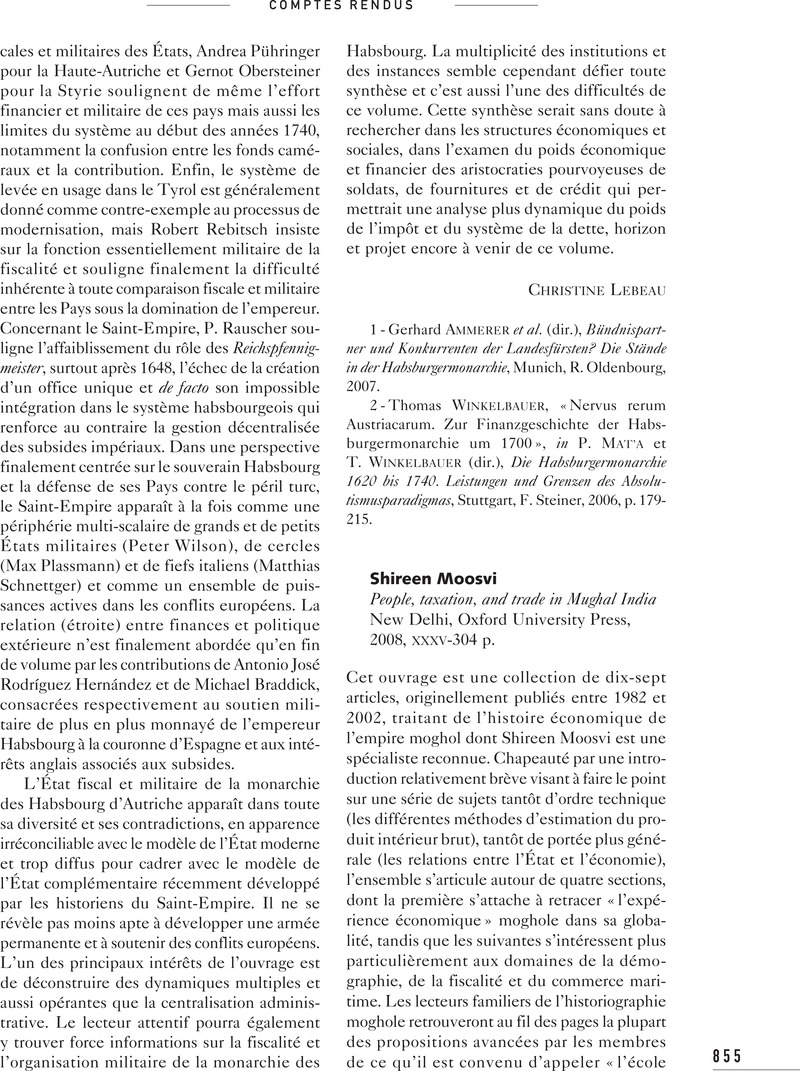No CrossRef data available.
Published online by Cambridge University Press: 20 January 2017

1- Pour une exposition détaillée de cette ligne d’interprétation, dont nombre d’éléments s’inspirent des travaux de l’historien de l’époque coloniale Moreland, William H.,From Akbar to Aurangzeb: A study in Indian economic history, New Delhi, Oriental Books Reprint Corporation, [1923] 1972,Google Scholar voir Habib, Irfan,The agrarian system of Mughal India, 1556-1707, New Delhi, Oxford University Press, [1963] 2002,Google Scholar et Moosvi, Shireen,The economy of the Mughal Empire, c. 1595: A statistical study, New Delhi, Oxford University Press, 1987.Google Scholar
2- Pour une bibliographie détaillée ainsi qu’une présentation synthétique des différents aspects de ce débat, voir les introductions à Subrahmanyam, Sanjay (éd.),Money and the market in India 1100-1700, New Delhi, Oxford University Press, 1994,Google Scholar et à Alam, Muzaffar et Subrahmanyam, Sanjay (éd.),The Mughal state, 1526-1750, Delhi, Oxford University Press, 1998,Google Scholar ainsi que, plus récemment, Washbrook, David, «India in the early world economy: Modes of production, reproduction and exchange », Journal of Global History, 2-1, 2007, p. 87–111 CrossRefGoogle Scholar.
3- Pour une critique serrée de la méthodologie statistique de S. Moosvi, voir la contribution récente de Frank W. ELLIS, «In what way, and to what degree, did the Mughal State inhibit Smithian growth in India in the seventeenth century? », Working Paper No. 14/05, Global Economic History Network, London School of Economics, 2005 : http://www.lse.ac.uk/collections/ economicHistory/GEHN/WorkingPaper14-FE.pdf.